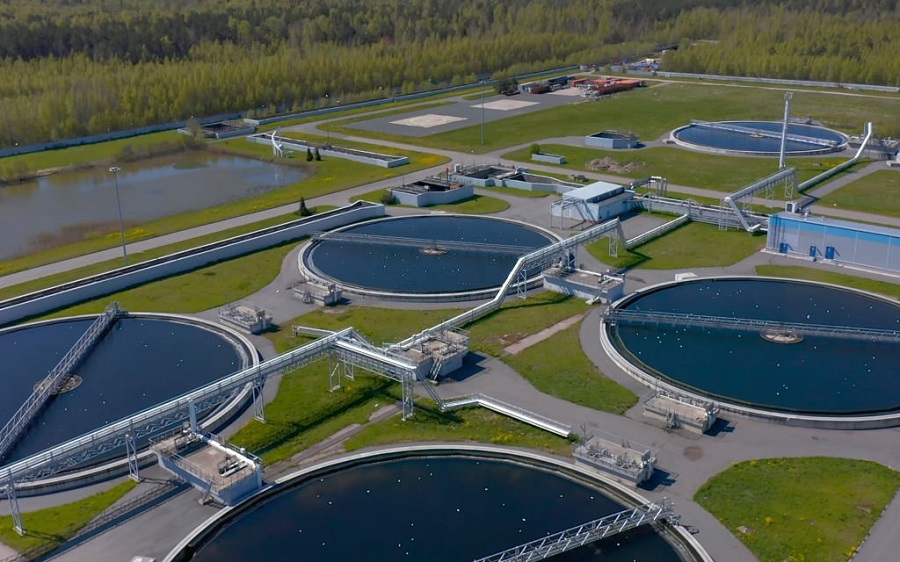Impact of Sewage Treatment Plant on the Environment

Sewage Treatment Plant – Sewage is a major problem in many cities around the world. It contains harmful contaminants that can pollute our water sources and harm both humans and wildlife.
These plants play a vital role in protecting the environment by treating wastewater before it is released back into rivers or oceans. They use a combination of physical, chemical, and biological processes to remove pollutants from the sewage.
The first step in the treatment process involves removing large solids through screens and settling tanks. Then, chemicals are added to help separate smaller particles from the water. Next, microorganisms are introduced to break down organic matter through natural processes like digestion and oxidation.
Once these steps are complete, the treated water undergoes further disinfection using methods such as UV light or chlorination to ensure any remaining pathogens are eliminated.
Positive Impacts:
- Water Quality Improvement: The primary function of sewage treatment plants is to treat wastewater, removing contaminants and pollutants before releasing the treated water back into the environment. This helps maintain or improve the quality of receiving water bodies such as rivers, lakes, and oceans.
- Public Health Protection: By treating sewage, these plants reduce the risk of waterborne diseases and the spread of pathogens, safeguarding public health.
- Reduction in Nutrient Pollution: Many sewage treatment plants remove excess nutrients like nitrogen and phosphorus from wastewater, which can cause eutrophication in water bodies. Reducing nutrient pollution helps protect aquatic ecosystems.
- Energy Generation: Some sewage treatment plants use anaerobic digestion to treat sludge, which can produce biogas (mostly methane). This biogas can be captured and used as an energy source, reducing the facility’s reliance on fossil fuels.
Negative Impacts:
- Energy Consumption: Sewage treatment plants consume a significant amount of energy for pumping, aeration, and other treatment processes. This can contribute to greenhouse gas emissions if the energy comes from fossil fuels.
- Chemical Usage: The treatment process often requires the use of chemicals, such as chlorine, to disinfect the wastewater. Improper use or handling of these chemicals can have negative environmental consequences.
- Sludge Disposal: The residual sludge generated during the treatment process requires proper disposal. Depending on how it’s managed, sludge disposal can have environmental impacts, especially if not handled and disposed of correctly.
- Habitat Disruption: The construction and operation of sewage treatment plants can disrupt local habitats, affecting wildlife and plant species.
- Noise and Odor: Sewage treatment plants can emit noise and unpleasant odors, which can affect the quality of life for nearby residents and wildlife.
- Impact on Receiving Waters: While sewage treatment plants aim to improve water quality, there is still potential for accidental releases of inadequately treated or untreated wastewater, which can harm aquatic ecosystems and water quality.
How Sewage Treatment Plant Work?
The process begins when raw sewage enters the plant through underground pipes. The first step is known as primary treatment, where large objects like debris and grit are removed to prevent damage to equipment. Next, the sewage undergoes secondary treatment, which involves biological processes that break down organic matter using bacteria and other microorganisms.
After secondary treatment, the water goes through a disinfection stage to kill any remaining pathogens. This can be done using chemicals or by exposing the water to ultraviolet light. The treated water is released into nearby bodies of water, such as rivers or oceans.
In addition to treating wastewater, some sewage treatment plants also generate energy from biogas produced during sludge digestion. This renewable energy source can help offset operating costs and reduce reliance on fossil fuels.
The Environmental Benefits of Sewage Treatment Plant
- It removes a wide range of pollutants, including organic matter, pathogens, heavy metals, and nutrients, from wastewater before it is discharged into the environment and improves water quality.
- Sewage Treatment Plants help protect aquatic ecosystems from pollution and eutrophication.
- It helps prevent the spread of waterborne diseases, protecting both human health and the environment.
- It reduces the risk of contamination of water sources used for drinking and recreation.
- Sewage treatment plants remove or significantly reduce contaminants such as heavy metals, pharmaceuticals, and personal care products from wastewater.
- By preventing the spread of waterborne diseases and reducing environmental contamination, sewage treatment plants contribute to overall public health improvements.
- Sewage treatment plants can recover valuable resources from sewage, including phosphorus and nitrogen, which can be used as fertilizers.
Conclusion
Sewage treatment plant play a crucial role in protecting the environment and promoting sustainable development. With their ability to effectively treat wastewater, these facilities help prevent water pollution, protect aquatic ecosystems, and ensure the well-being of both humans and wildlife.